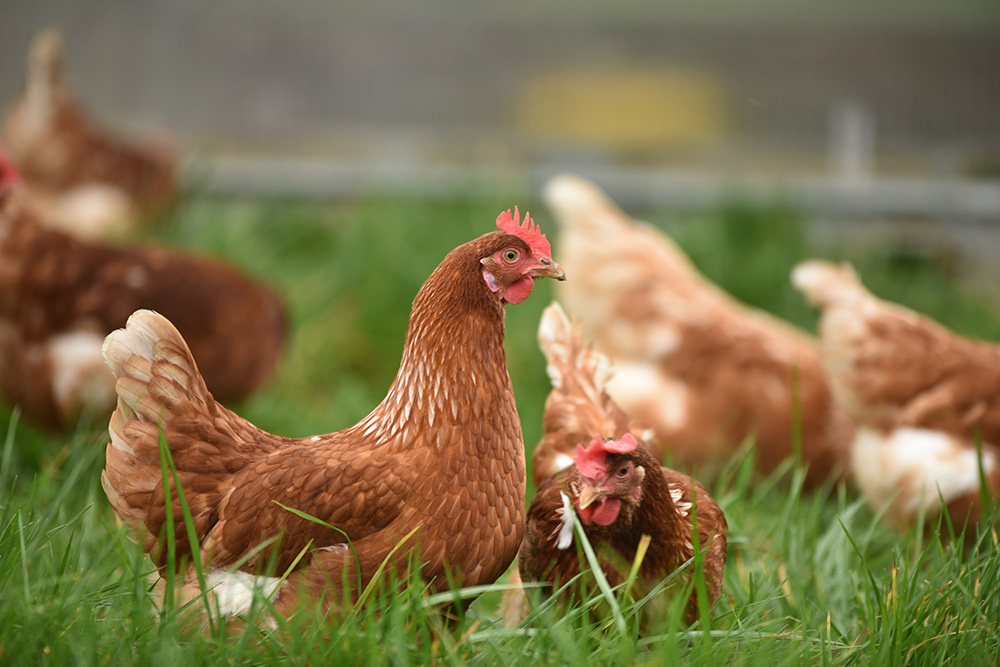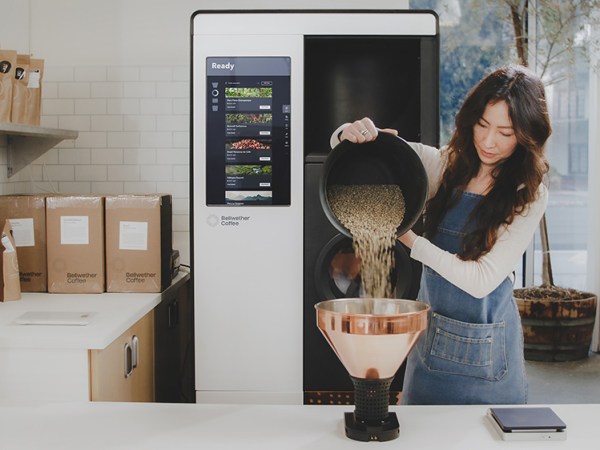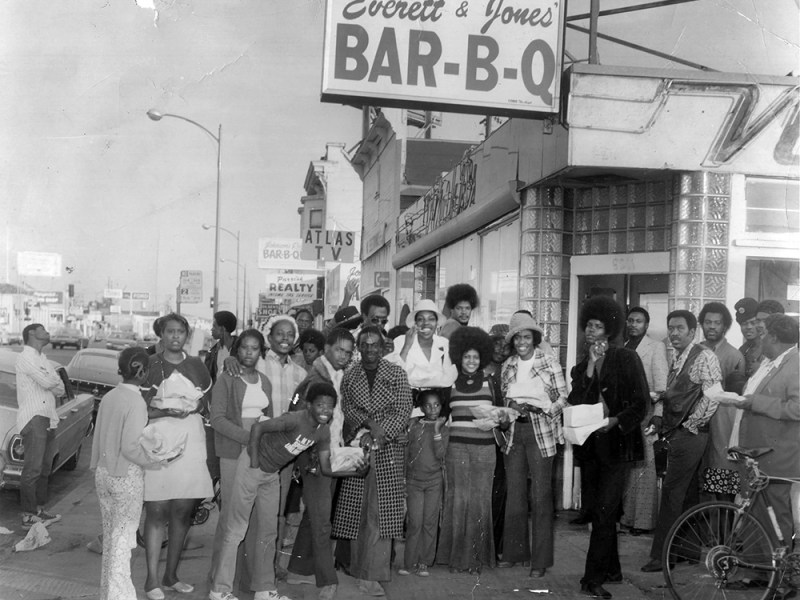While egg prices have dropped from the historic highs reached earlier in 2023, interest in raising urban chickens, for eggs or fun, continues to grow. Maintaining your own flock exploded in popularity during the COVID-19 shutdowns and is still holding strong.
It is legal to keep chickens on residential property in Berkeley (it is even legal to keep roosters, though their crowing could cause enough ruckus to trigger the city’s noise ordinance), and I was one of those who picked up the hobby during the pandemic. In Oakland, it is legal to keep chickens but not roosters. For other municipalities, the website BackyardChickens.com offers a useful compendium of local ordinances, which often include rules on how close a coop can be to occupied dwellings.
I started in 2019 by purchasing a darling little flat-box hen house from Wayfair for roughly $200. I proudly put it together in our front yard. And there it sat until the pandemic amped up my inner homesteader and I signed up to get four chicks from Berkeley’s Biofuel Oasis, a worker-owned urban farm store. Run by Kate Hobbs and Novella Carpenter, Biofuel Oasis offers springtime chick pickups, chicken supplies, beekeeping supplies, biofuel and even fresh eggs (when they aren’t sold out).
BioFuel Oasis will have a variety of breeds of chicks available for purchase and pick-up on Sept. 29 and Oct. 6. Contact Biofuel Oasis at (510) 665-5509 or biofueloasis@gmail.com for more information and to reserve chicks.
Fast forward three years and we have three sweet hens who live in their own little house out in front of our own home. They are allowed free range of a limited part of our small property during daylight hours. I get a kick out of doing my farm chores each day (collecting the eggs from the nesting box is always fun, raking up chicken poop not as much), and a neighbor recently stopped by to tell me she thinks of the ladies as our neighborhood mascots.
In the best of times, we collect about a dozen eggs a week, but sometimes we only get a few. Our hens—Goose, Honey and Irene—have been known to lay their eggs in secret spots where we find them days later. Those go straight into the compost. And when they molt (eight to 15 weeks each fall/winter when old feathers are replaced by new ones), they lay nothing. They will stop laying entirely around six or seven years old, when they transition to a life of leisure, and will live up to 10 years.
So, is trading store-bought eggs for backyard-farm-fresh ones a money saver? No. Is it hecka fun? Yes.
If you are thinking about raising your own hens, here is a rundown of costs to think about along with some local resources to help along the journey.

Raising chicks
I picked up the chicks in spring 2021. They were cheap ($8 each), and I borrowed much of the gear needed for raising them (a heat lamp and waterer). I put them in a cage that we had been using for guinea pigs and used recycled paper bedding from Carefresh (up to $25 a bag). They grew up in our living room for roughly the first 10 weeks, drinking fresh water and eating chick starter food (under $50 for a huge supply).
A cautionary tale: one of our chicks—the most gregarious one—turned out to be a rooster. We were warned to have a plan in case one of our chicks was a boy (they were 90% likely to be female—chicken sexing is not so easy when they are babies), but we sadly did not. Farm animal shelters don’t want them; my calls to nearby hobby farms went unanswered. We ended up finding a friend of a friend who turned him into dinner.
Building a coop
As they grew … and grew … and grew, it became clear that we’d have to not only reinforce the hen house to be predator-proof (I drove about 20 more screws into it than the instructions required), but that it also wasn’t going to provide enough room for these growing ladies.
Carpenters my husband and I are not, so we enlisted the aid of a handyman to build a raccoon-proof run that my husband insisted be tall enough for us to walk in (good call). We chose high-quality materials at a time when lumber costs were through the roof, and the structure cost us at least $1,000, but we’ve never had to worry about the safety of our flock.
“I know people who’ve paid $10,000 on their chicken coop,” said Carpenter from Biofuel Oasis. “I tell people if you’re trying to save money, this isn’t going to do it.”
Nesting box supplies
We use wood flakes for nest box bedding. They cost about $23 per bag and we buy a bag every other month. We’ve also experimented with nesting pads, paper-backed pads covered in shredded wood shavings. They make cleaning easy but are pricey at about $30 for 10 pads.
Chicken feed and nutrition
We buy 50-pound bags of hen-laying pellets at Mike’s Feed & Pets in San Leandro for $31.49, which lasts about three months for our three birds. (Mike’s is another local spot to get chicks and any other chicken supplies.) For treats, nothing beats dried mealworms, yum! A five-pound bag of “Mealworm Frenzy” will set you back $47.21 on Chewy.com and will last months. We also provide them a mix of granite grit (for digestion; $15 every few months) and crushed oyster shell grit (provides calcium for stronger eggshells; $20 every few months).

Medical care
Thus far the ladies have been doing pretty well. During the monstrous rains this past winter their food became moldy, causing an outbreak of chicken diarrhea, which we remedied with some hen probiotics ($24) mixed in their water. Honey has been having recent gut issues, so we’ve deployed the probiotics again, with a secondary water container that includes some apple cider vinegar as an additional gut aid. An avian vet hasn’t been needed yet; fingers crossed.
How the eggs taste and look
The eggs my chickens lay are works of art, in soft brown and blue-green shades. They aren’t all the same size or even shape—Honey lays oblong eggs while the other two lay more traditionally shaped eggs. When you crack one open, the yolks are a vibrant orange-yellow you don’t see in store-bought eggs. The taste itself isn’t tremendously different from the free range eggs we used to pick up at Berkeley Bowl, but we have the satisfaction of knowing our hens are happy, well-cared for and well fed.
Cost per egg
So how much does it cost to eat a home-grown breakfast scramble? Carpenter figures it’s about 50 cents an egg once you factor in all of the expenses. To put that in context, a dozen regular eggs at Safeway right now are $4.99; organic eggs are $5.99. So, if you can keep costs down, your own eggs may be about the equivalent cost as organic, grocery store eggs.
But many folks think keeping hens offers other, non-financial benefits. “For many people, it’s about having a sense of self-reliance,” Carpenter said. “It’s pets with benefits.”

Kathy Evans of the community of Canyon, tucked into the Oakland hills, has kept chickens for 30 years and currently has a flock of 27. She says it’s a mix of a chicken farm and a chicken retirement home. When her ladies are too old to lay, they enjoy the good life with their younger compatriots.
Evans agrees that raising your own chickens for eggs is not really cost-effective, but “if you bought eggs as good as what you raised,” you’d end up spending a pretty penny anyhow.
Evans was at Biofuel Oasis on a chick pick-up day this spring to acquire seven new chicks, hoping she’d get a rooster in the mix. “The chickens like it,” she explained.
As Evans left, Christine and Milad Shiraz of Oakland showed up with their two children, Aria, 3, and Ellie, 15 months, to find a few chick friends for the hen they recently inherited from a departed tenant.
Owning a chicken is “very exciting and the kids love it,” said Milad. “Aria wakes up every day asking if we can let the chicken out. It’s a great experience for him.”
As the family left Biofuel Oasis with their two new chicks, Aria was beaming.




